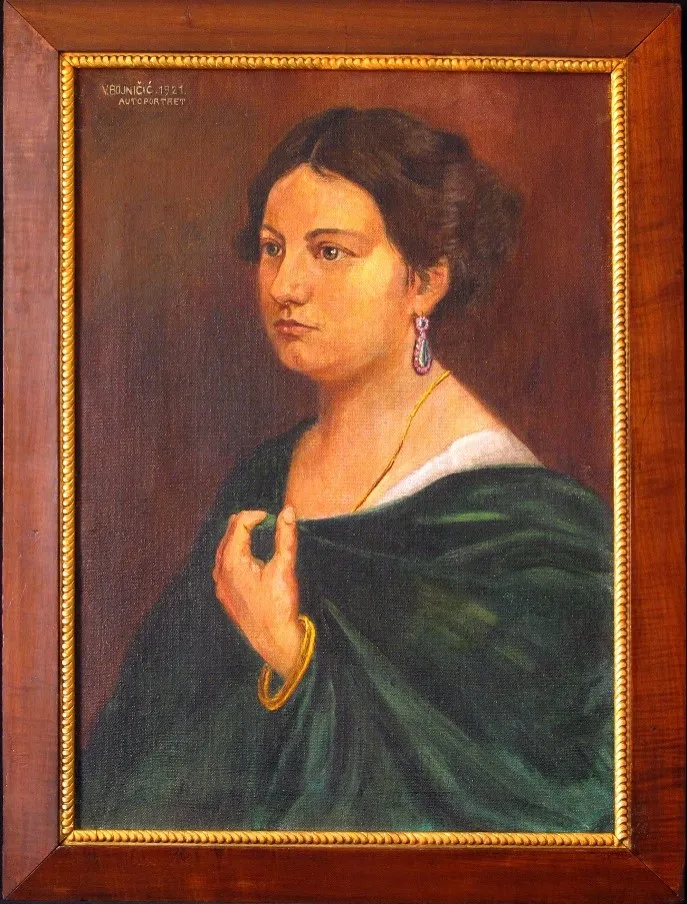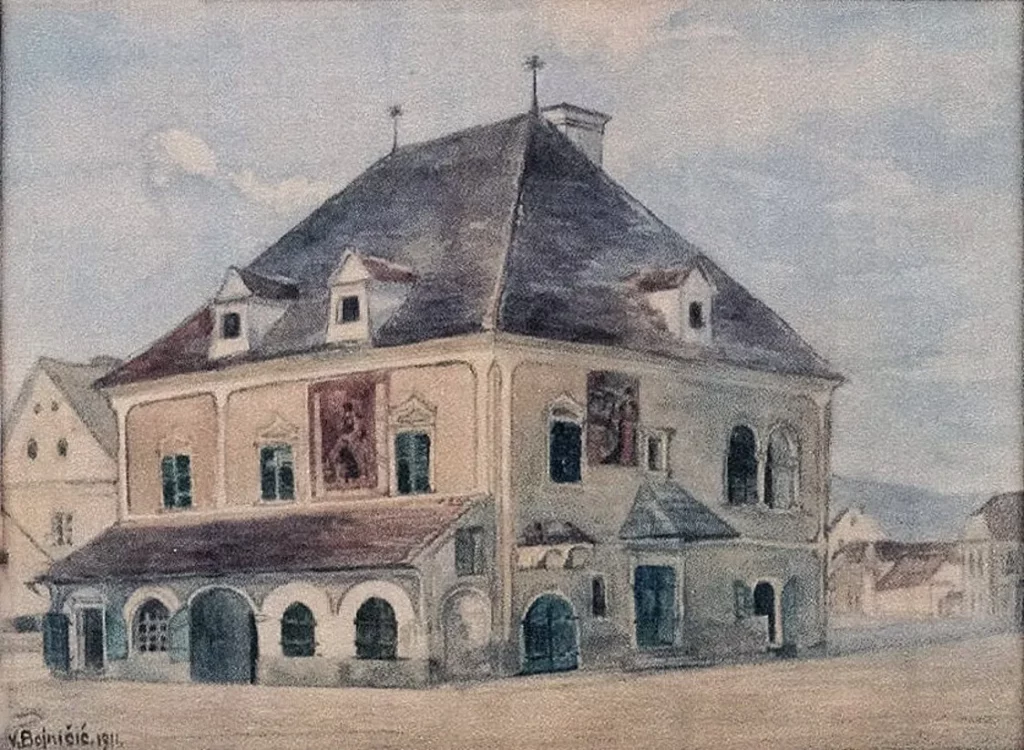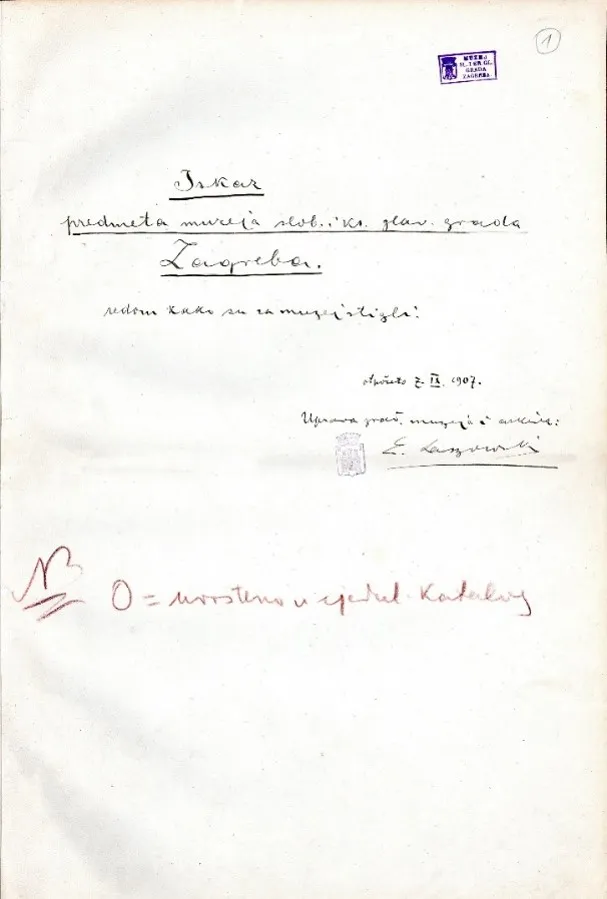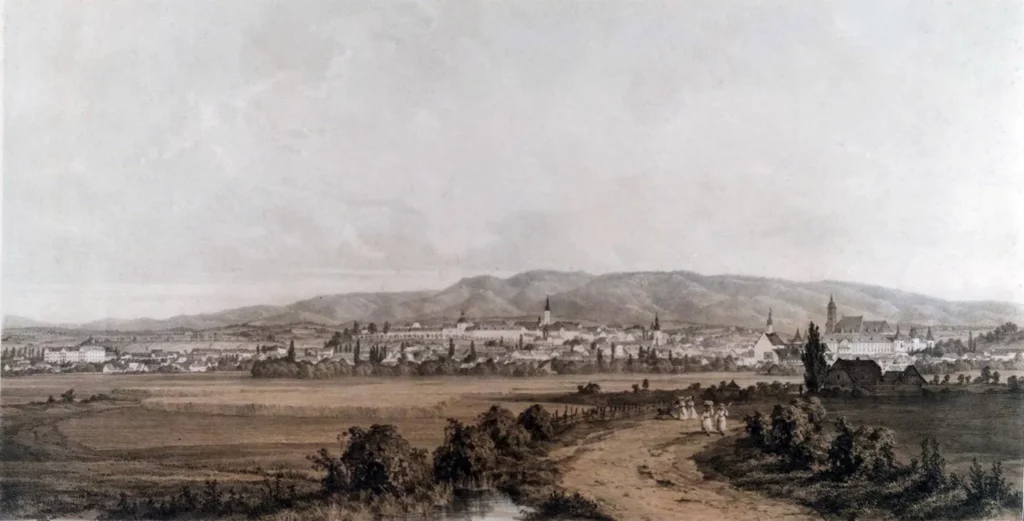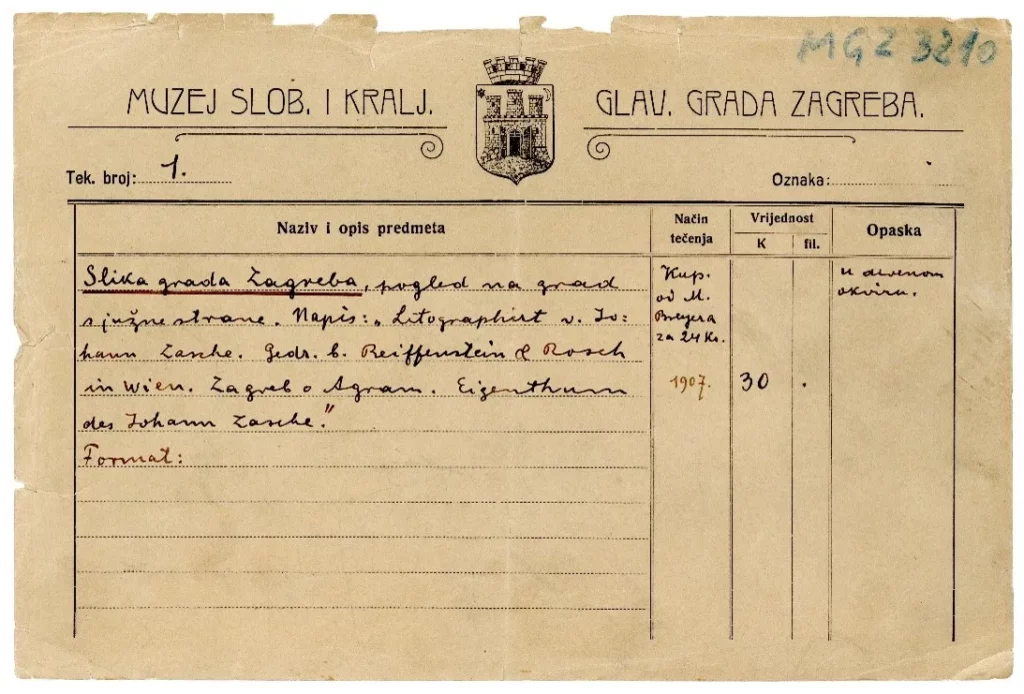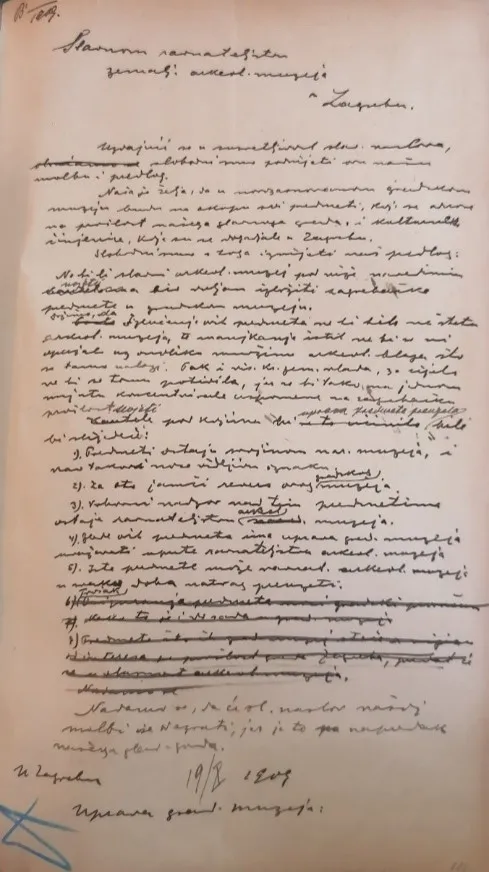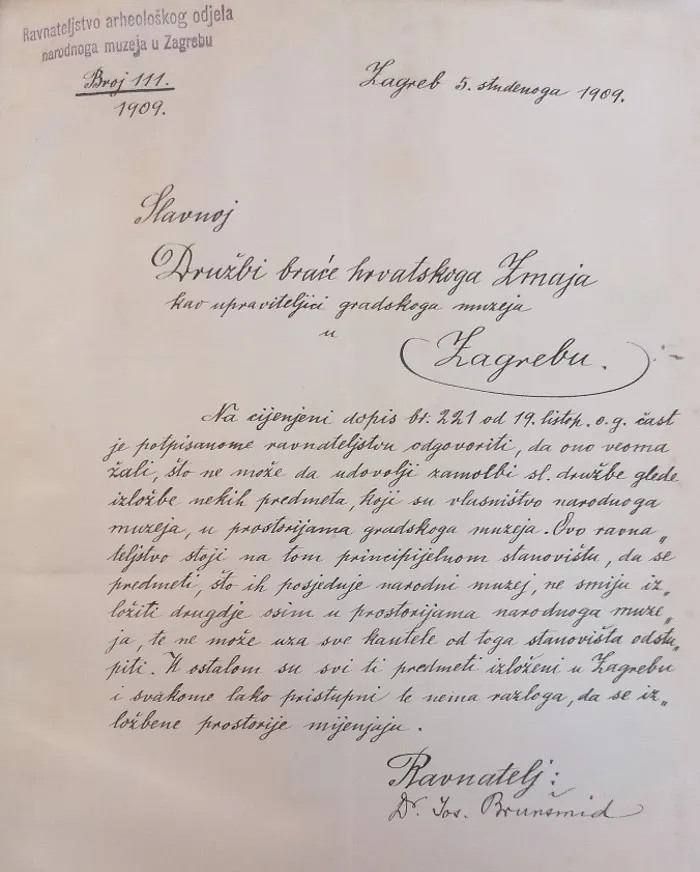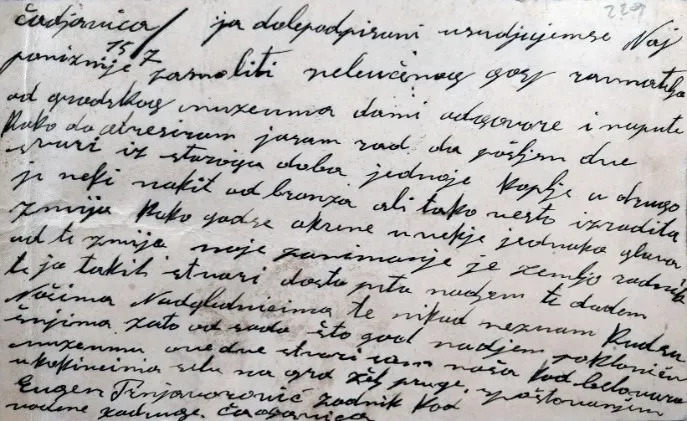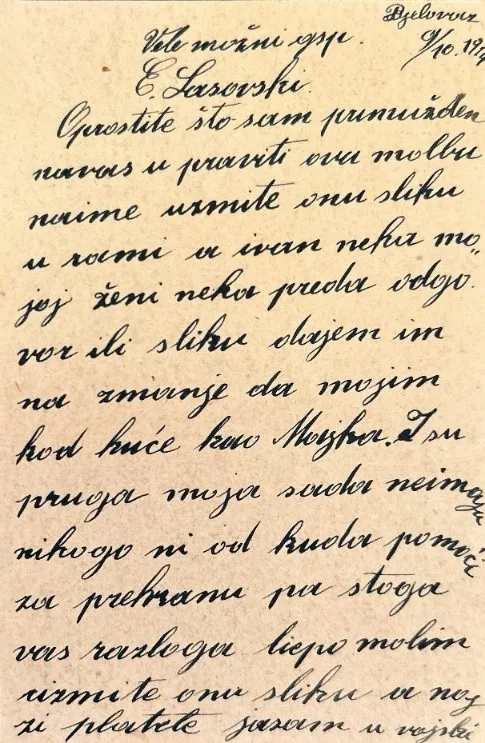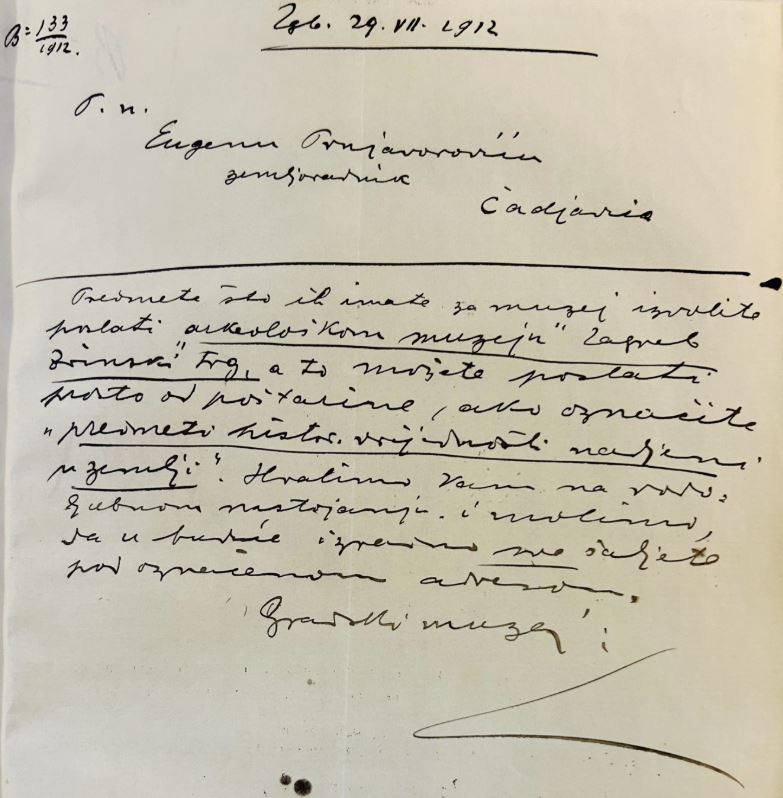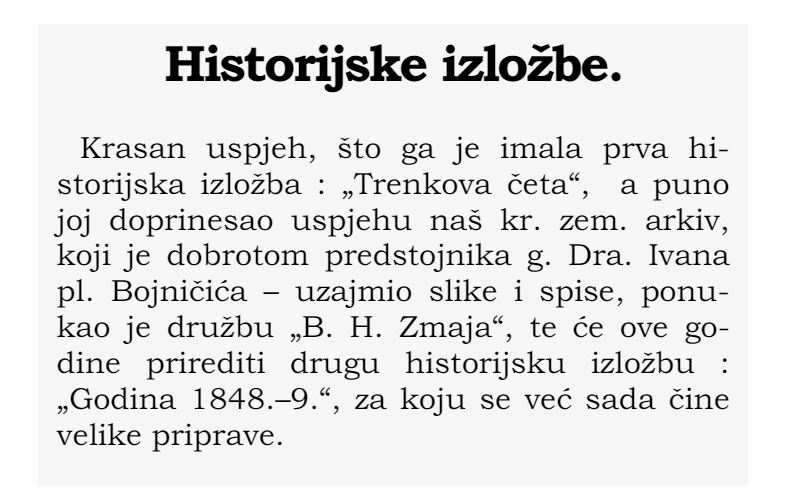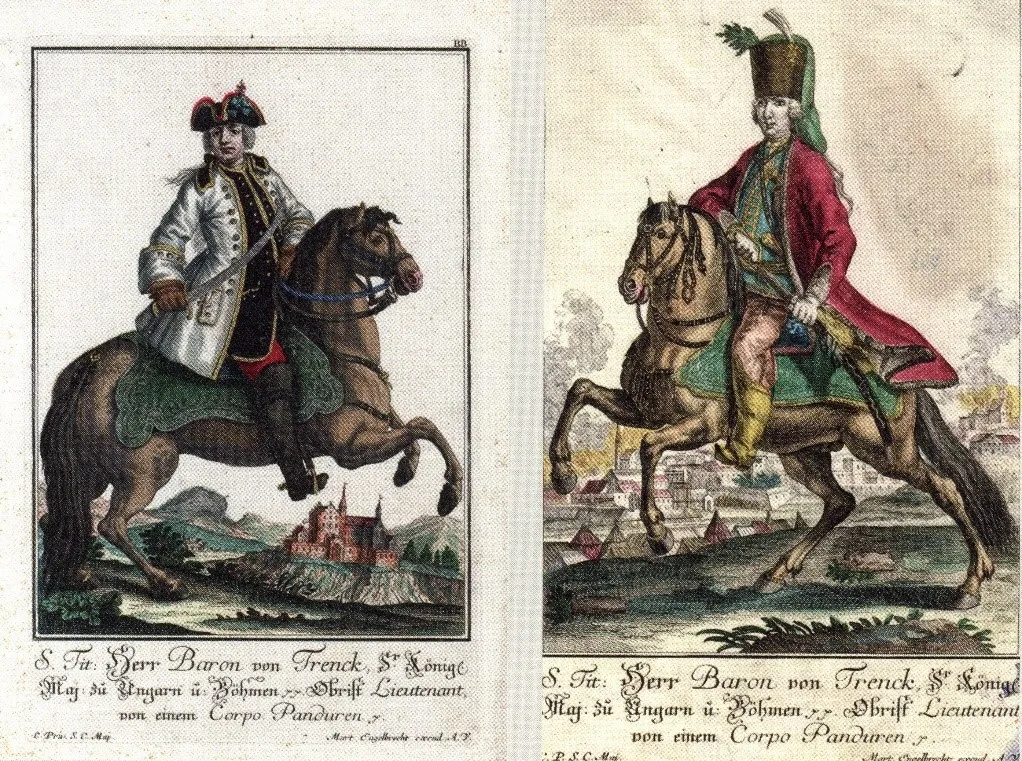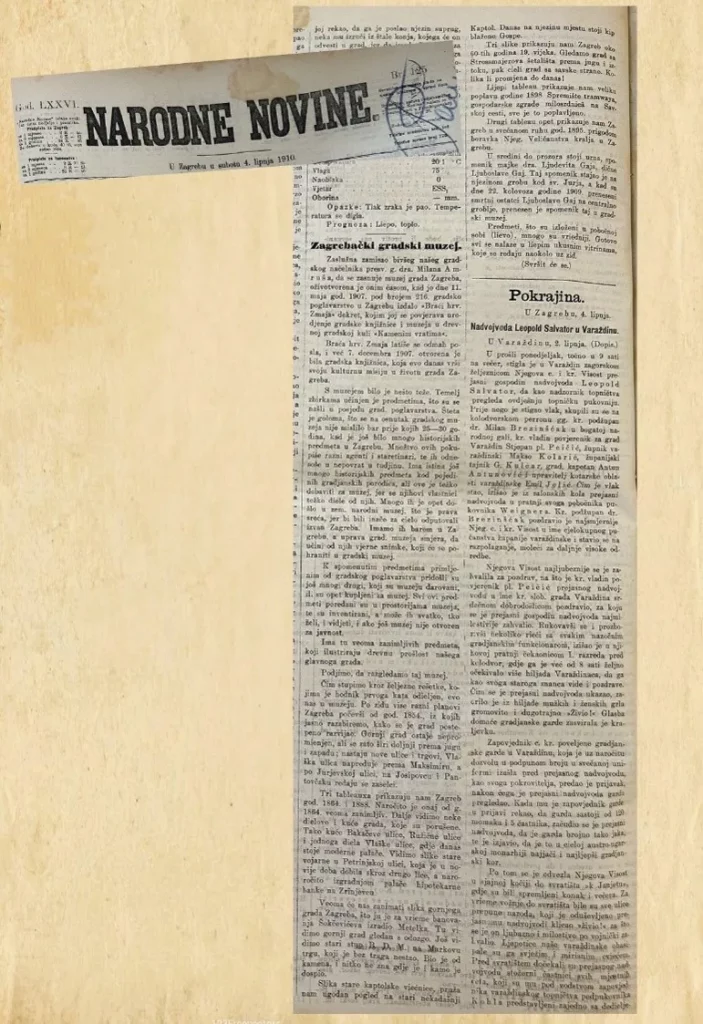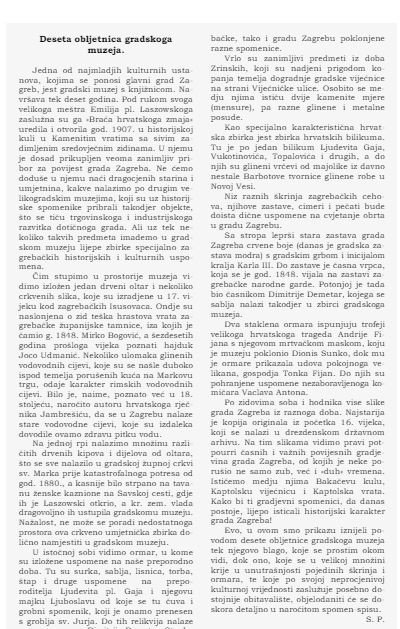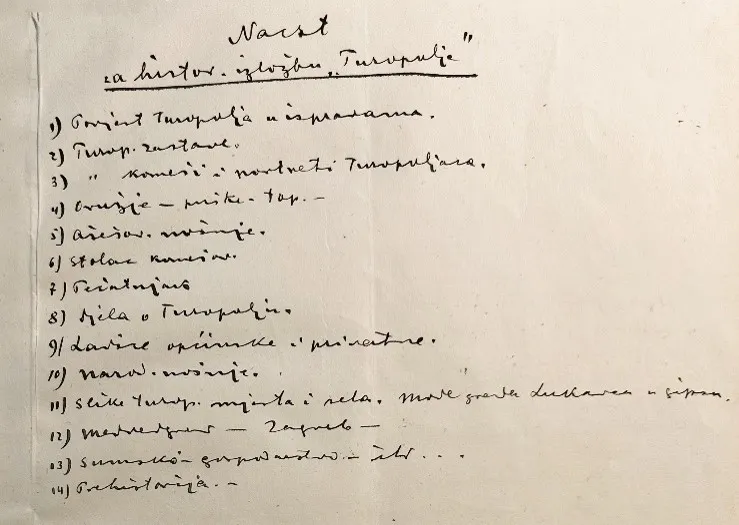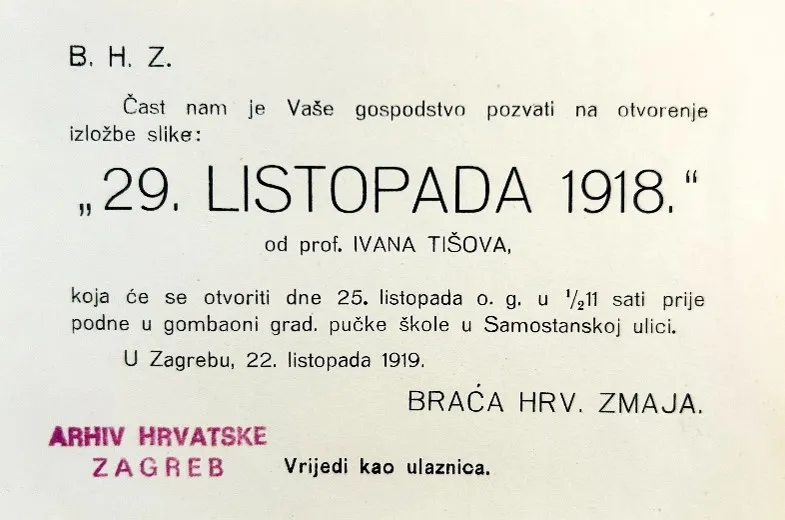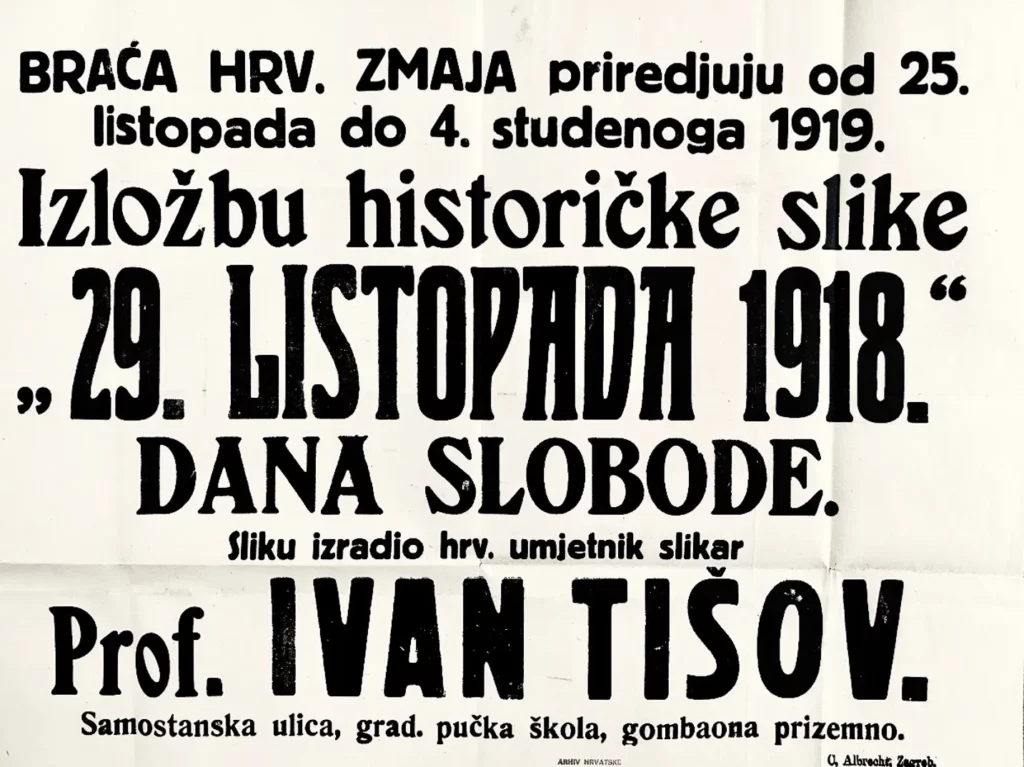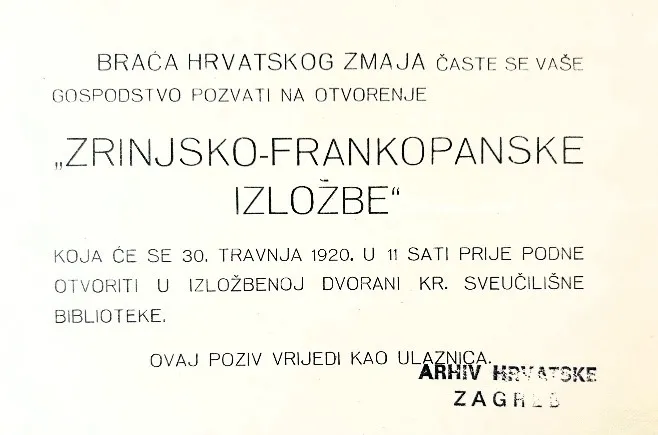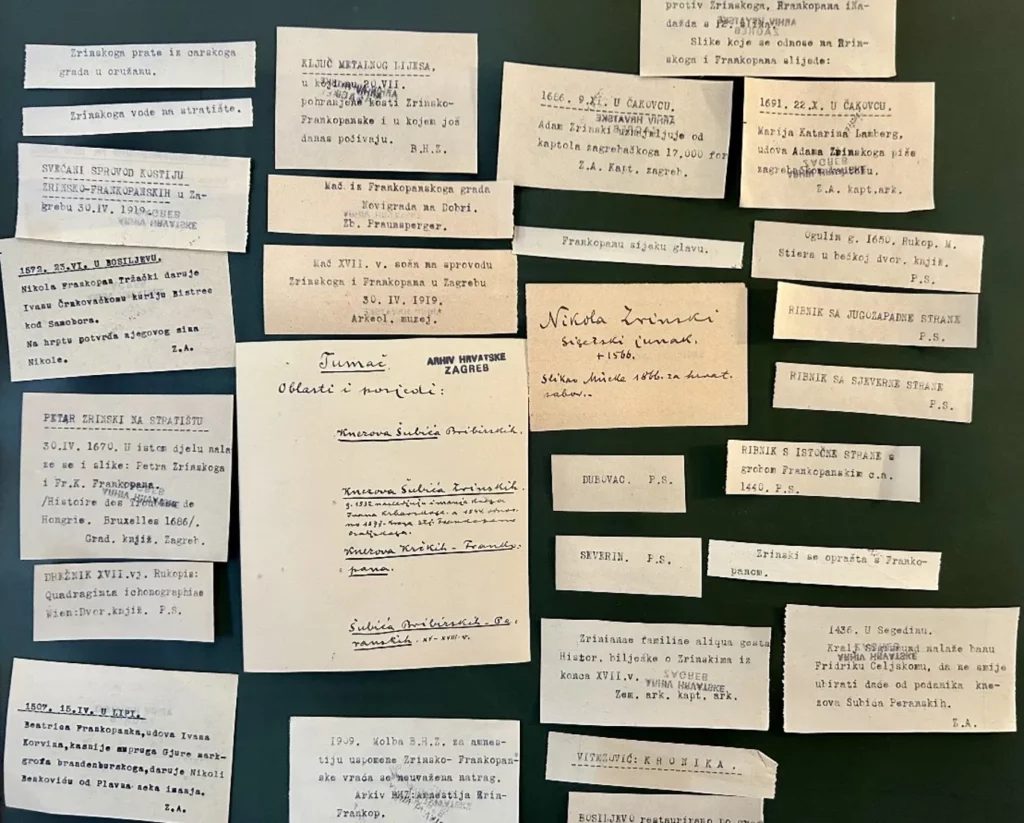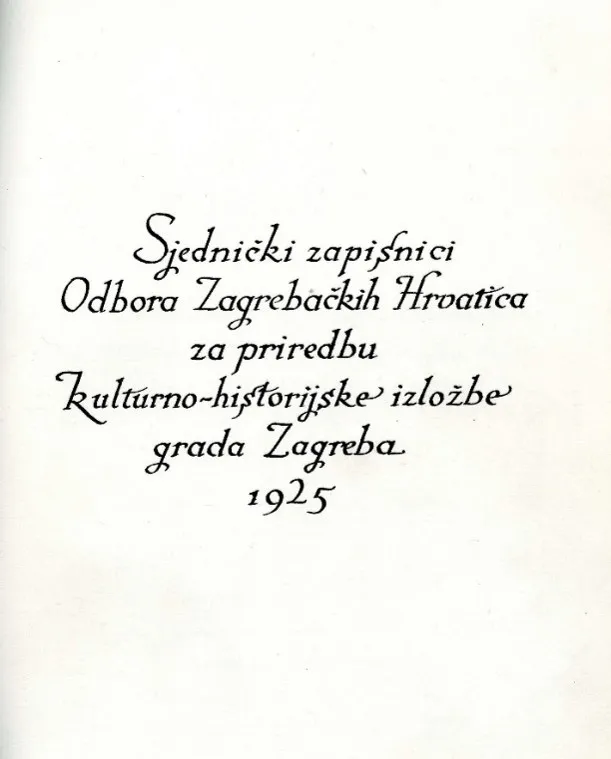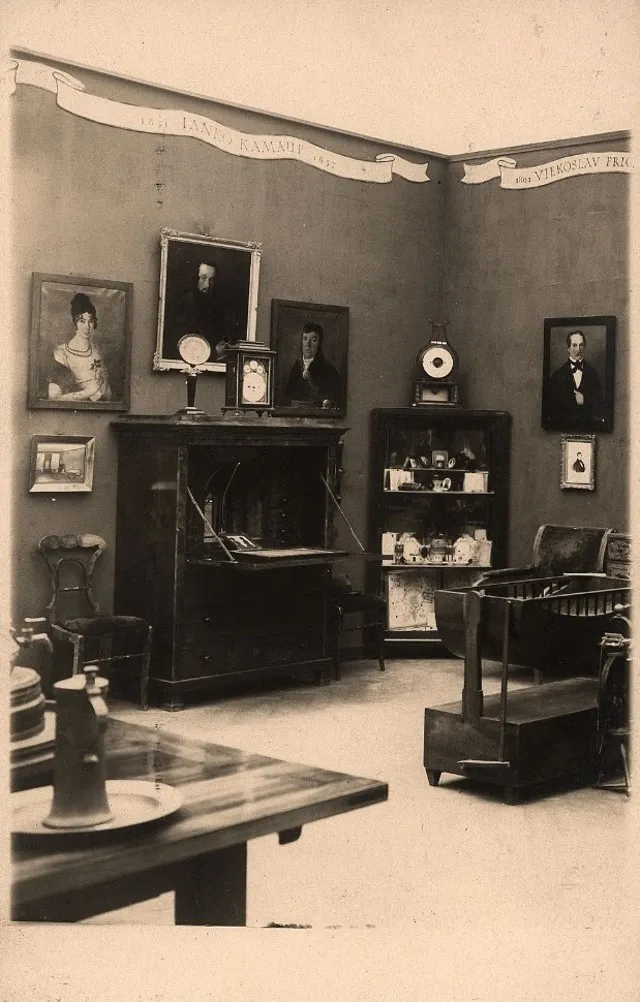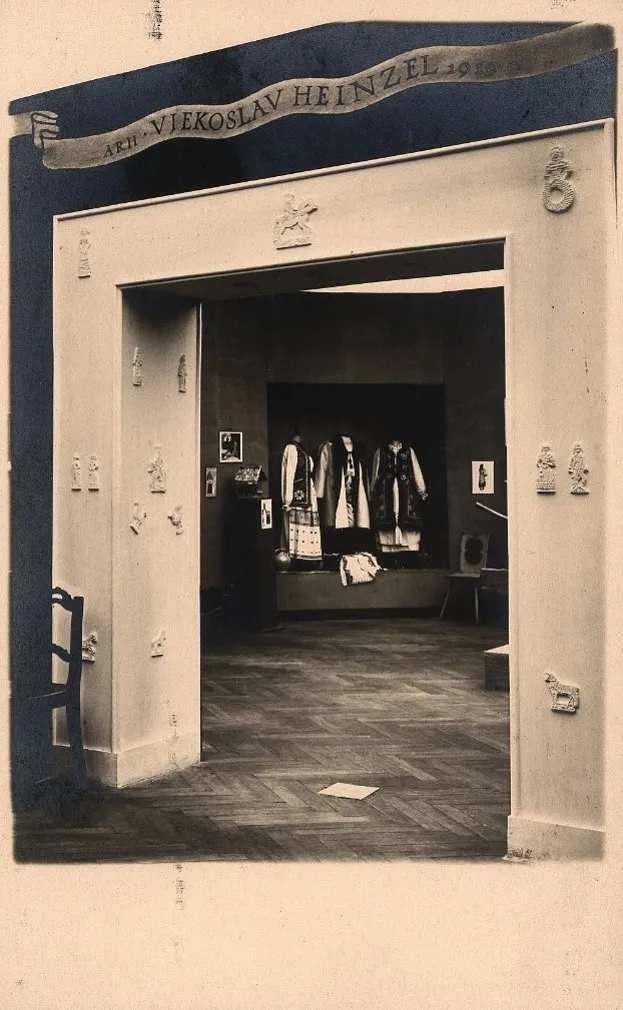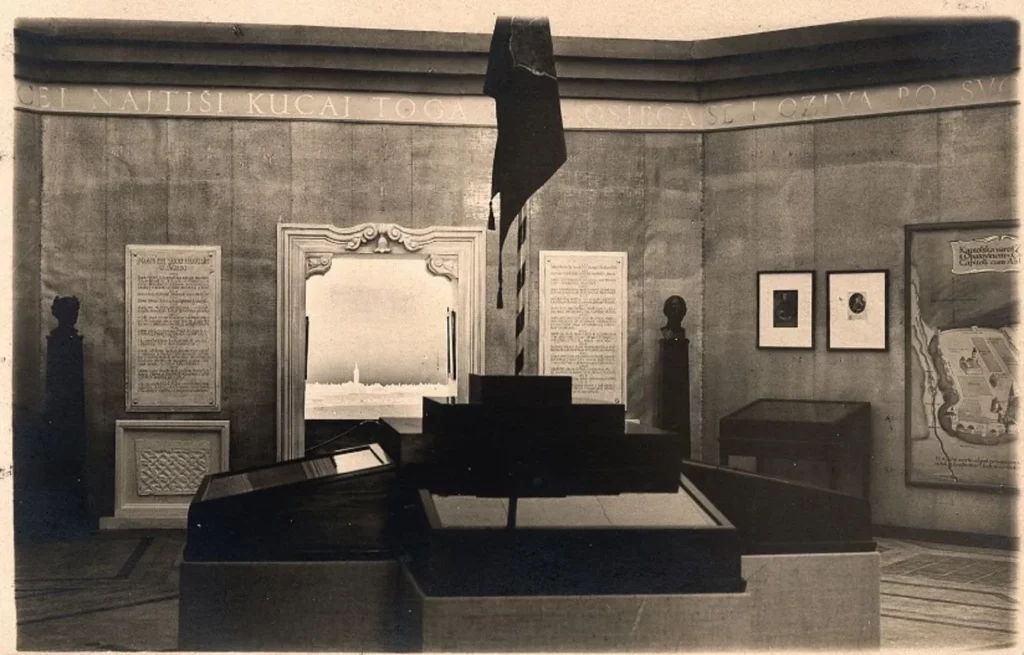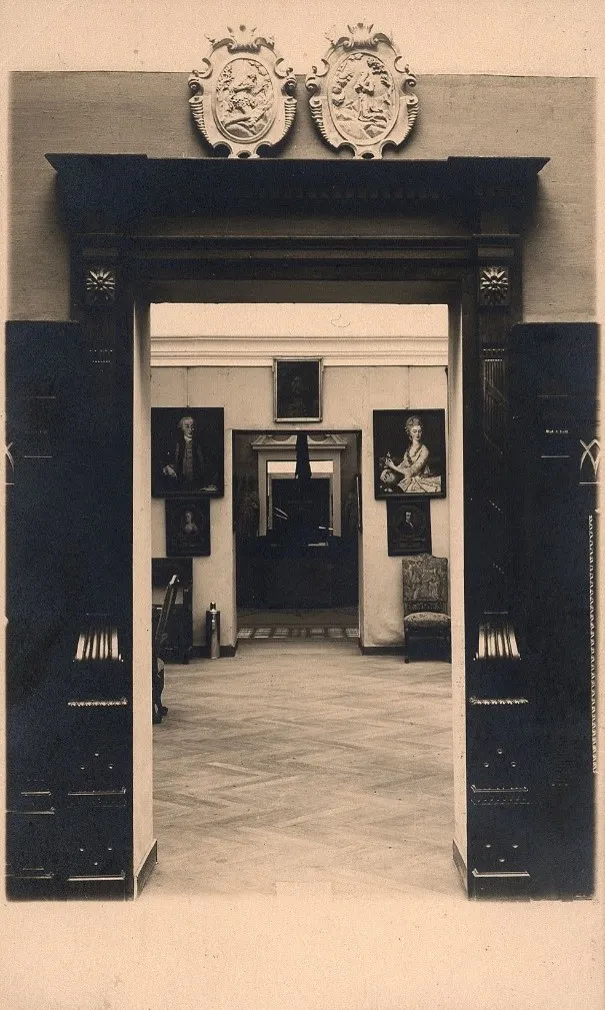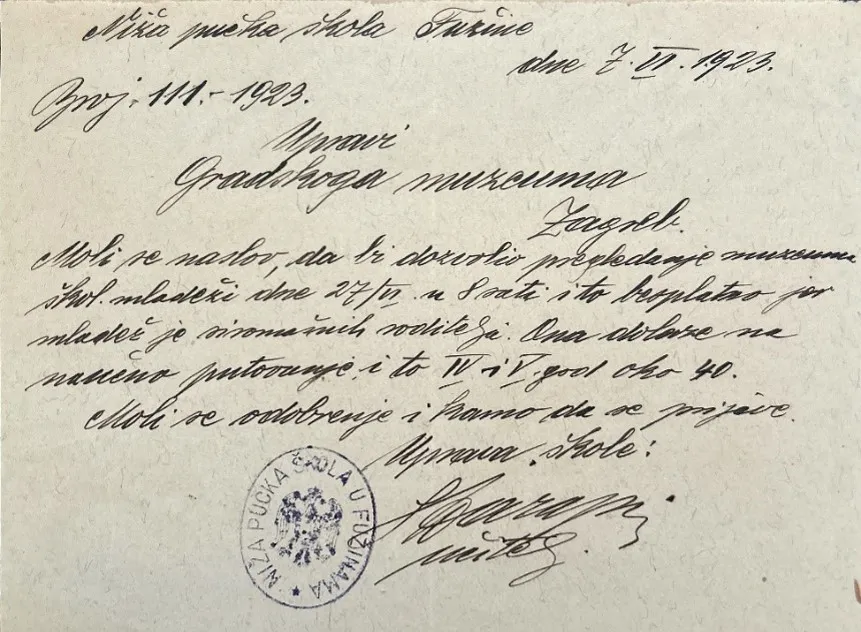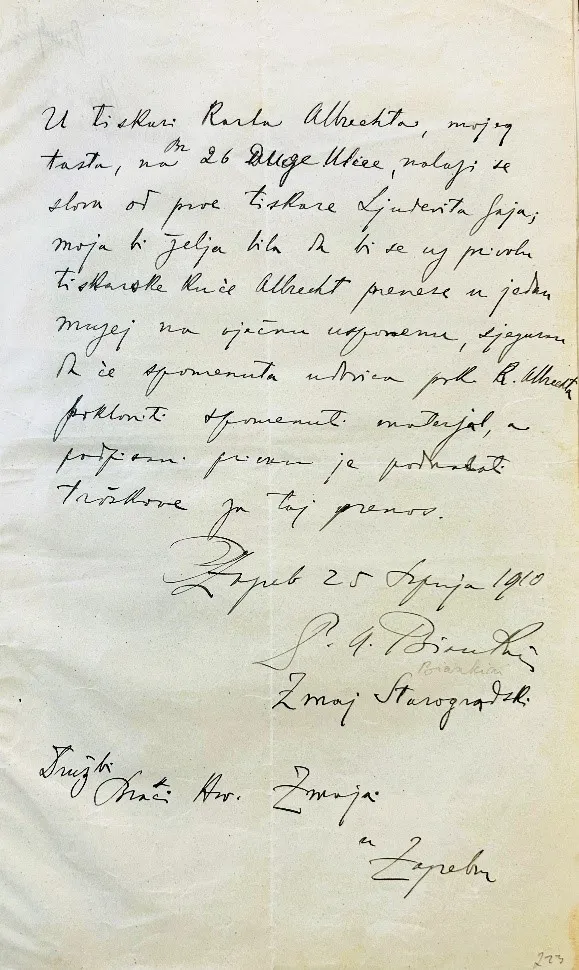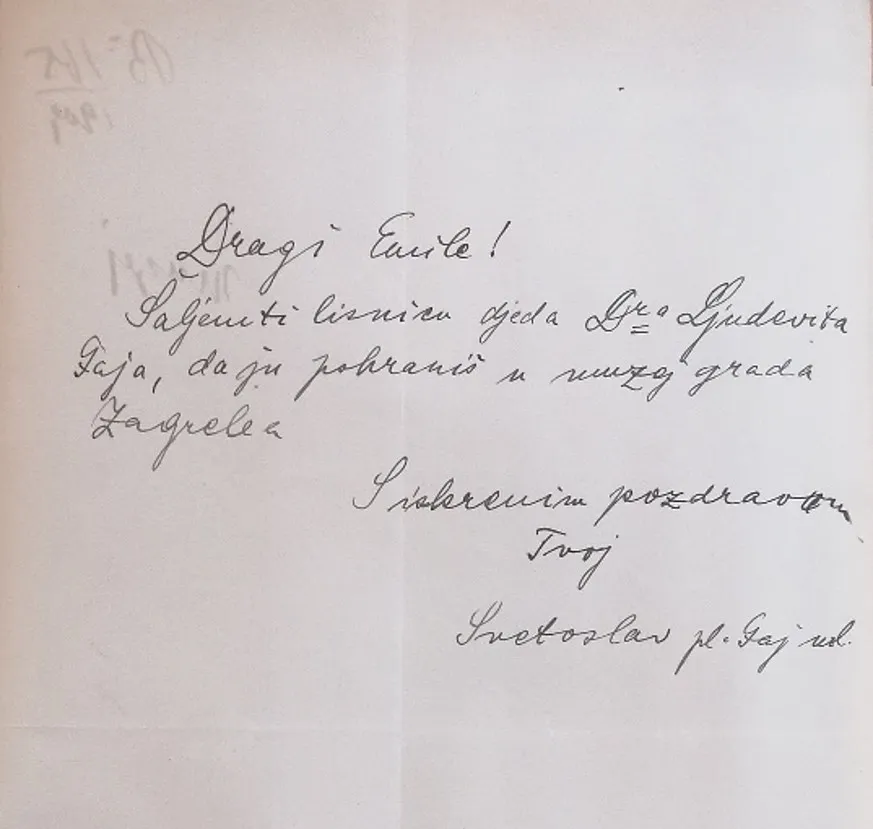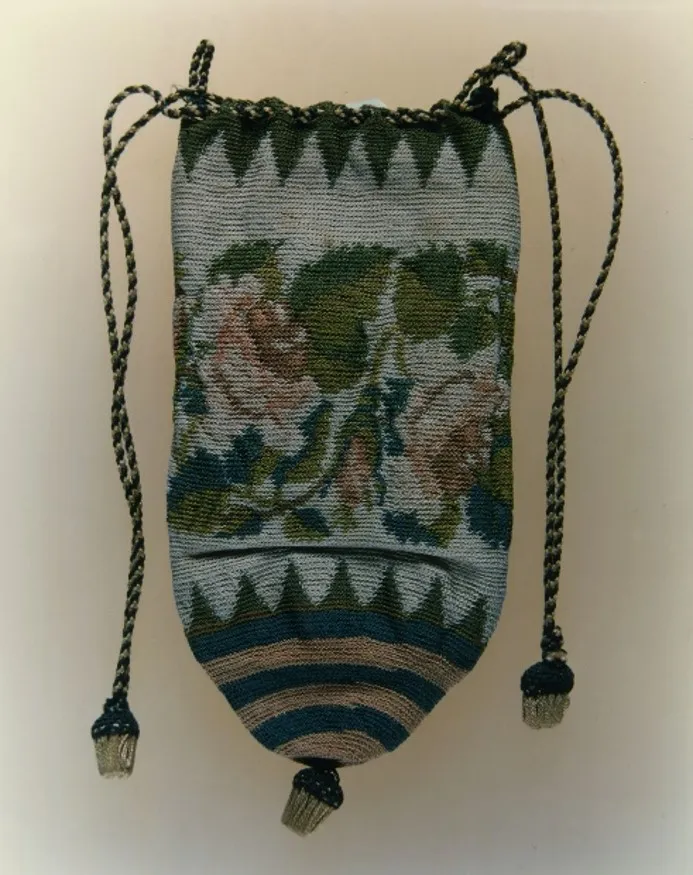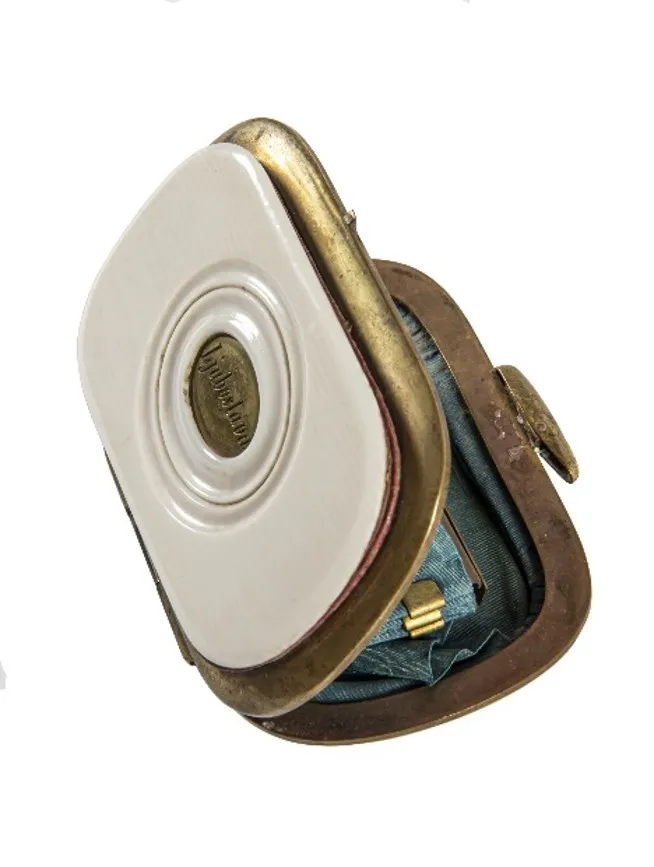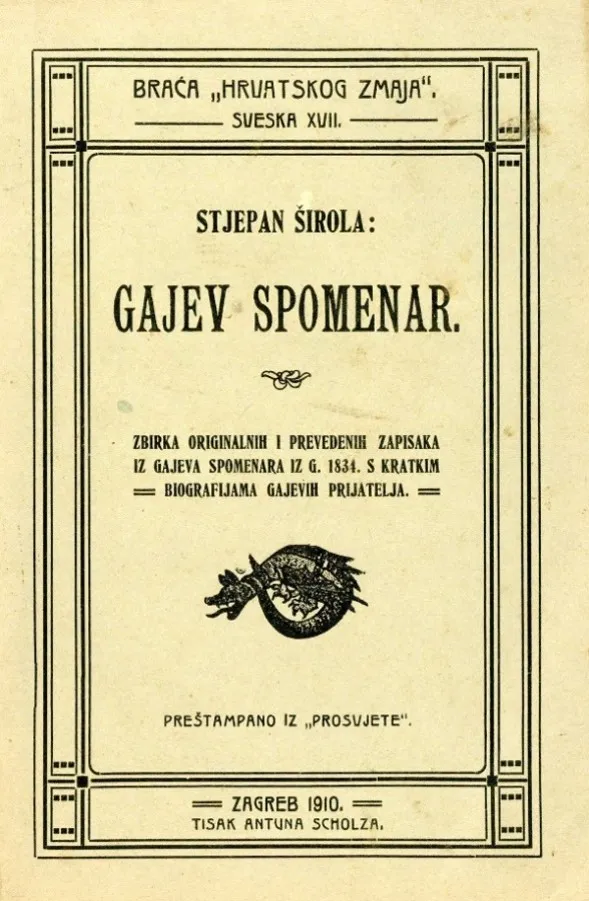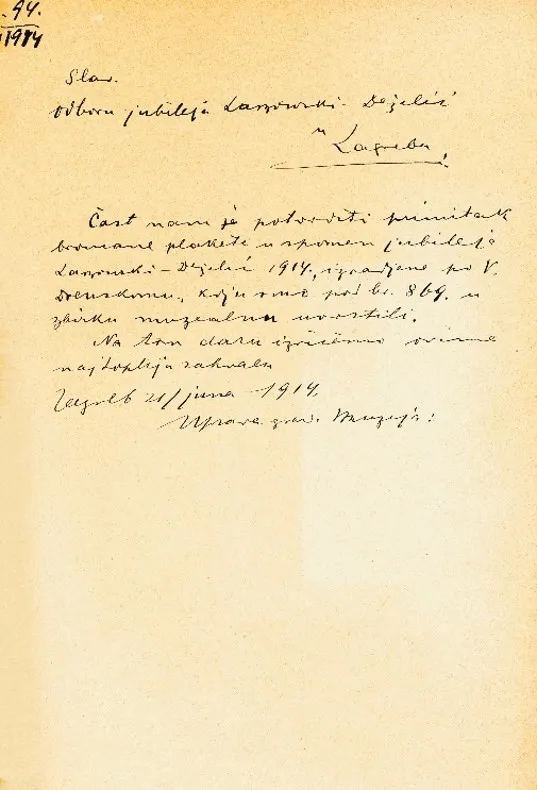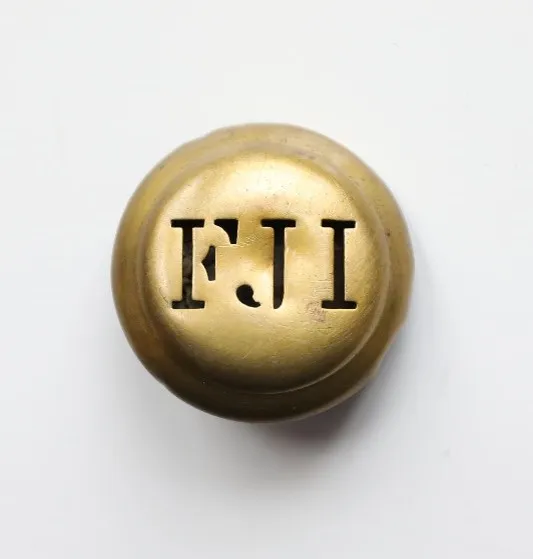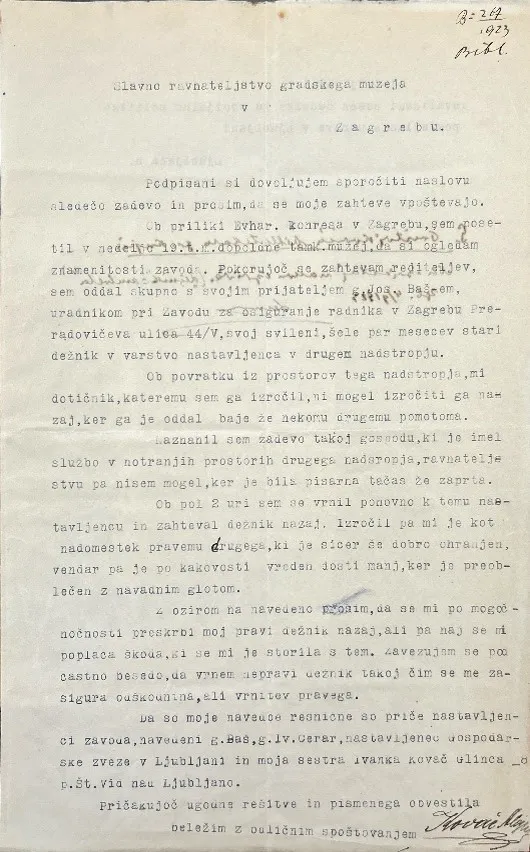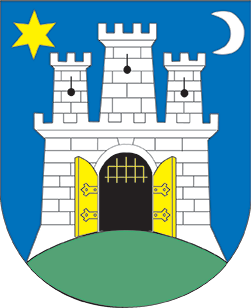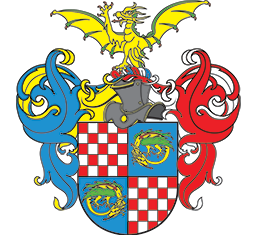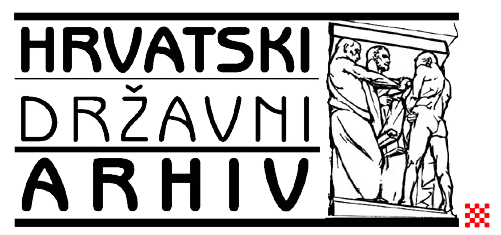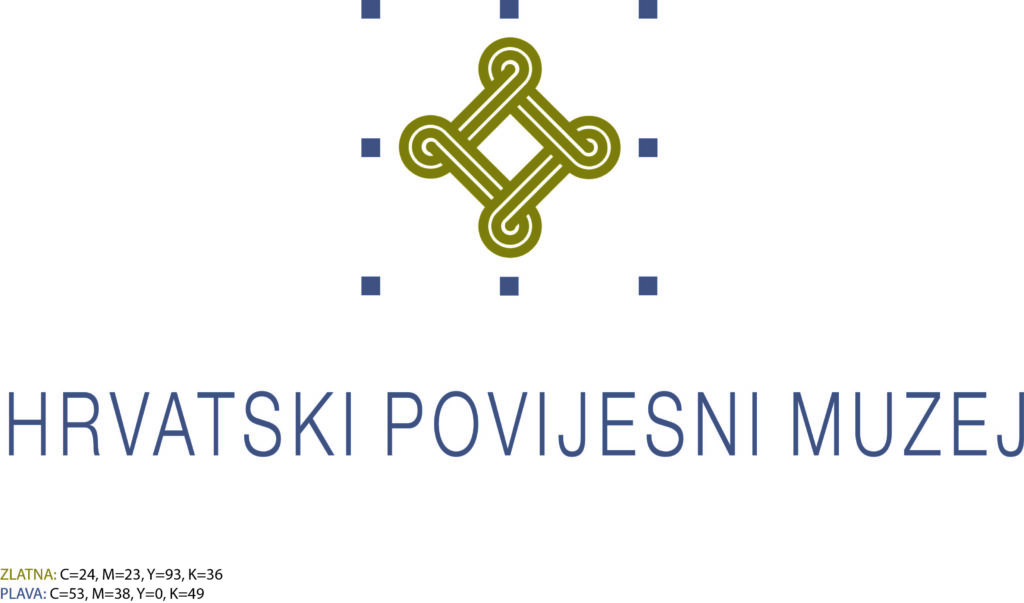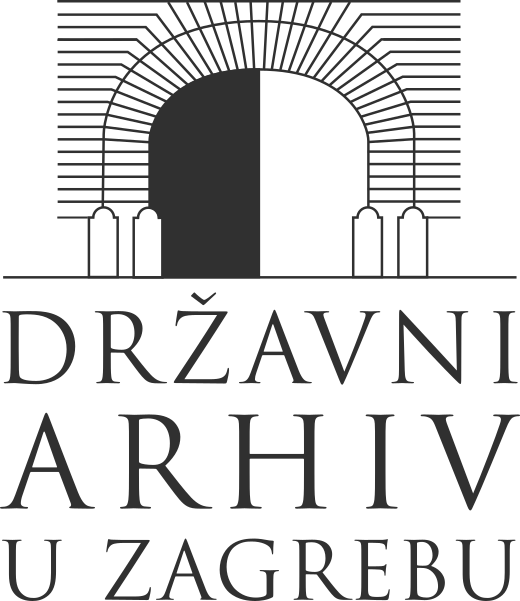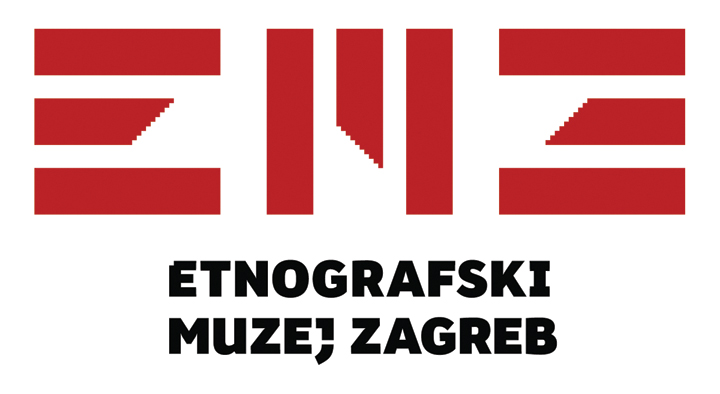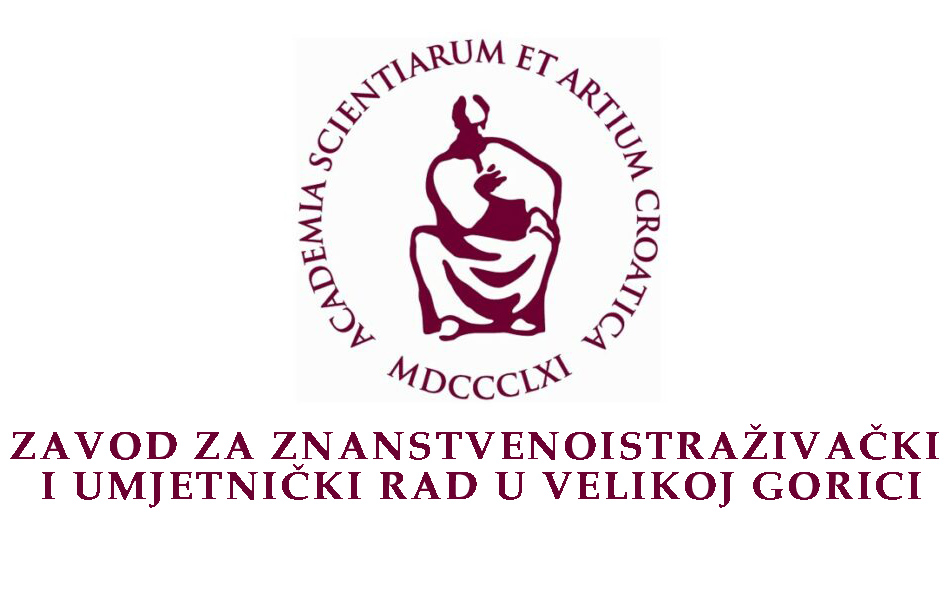8. My museum work
I founded City Museum, once again under the company B.C.D. I collected and organised it completely and delivered it fully catalogued to the city council in 1925, which placed it in the art pavilion.
After the establishment and one year of free management of the city museum, the library, and the archives, on behalf of the Brethren of the Croatian Dragon” Society and in agreement with the City Council, Laszowski continued to manage these important city institutions. He organised the City Museum similarly to the Vienna Museum – collecting objects following the patterns of that museum’s collections: dance cards, coins, badges and medals, parts of architectural elements, city plans, prints, photographs… The idea of forming a collection of historical paintings, following the example of such a collection in the city museum in Vienna, was present from the very beginning. Thus, in an effort to preserve the image of old Zagreb through artistic works, locations, and vistas that had disappeared, he entrusted the creation of paintings of old Zagreb to a young painter Vjera Bojničić, daughter of Ivan Noble Bojničić, director of the Royal Land Archives. Laszowski writes about this collection in the Report for the year 1910:
… we emphasize that we… established a collection of watercolours of Zagreb’s historical buildings, … because, unfortunately, our historical buildings in Zagreb have been disappearing one after another. In this way, at least many will be saved from oblivion, at least in pictures…

8.1: Seal impression of the Museum of the Free and Royal Capital of Zagreb
Zagreb, before 1926
MGZ
He documented all collected materials in a Book Account of Objects of the Museum of the Free and Royal Capital City of Zagreb and personally entered data about the objects acquired for the City Museum. In addition to the names and descriptions of the objects, Laszowski included the name of a person or a body and the manner in which the object came to the museum, the value of the object (in Krone and Filler), and in the Remarks column, he entered other data and notes. After inventorying 771 objects to 252 numbers and filling 38 pages of the book, he entered the data about the objects into the “Card Catalogue.” Interestingly, Laszowski sketched the objects in the Account of Objects, added their impressions alongside the seal data, and for some objects he recorded very detailed data and interesting stories about the objects, for easier subsequent identification. For example, he described the picture of Medvedgrad donated to the Museum: This picture once stood in the Kaptol council chamber. When it was demolished, a member of the clergy took it. It ended up in the attic. When the clergyman’s cook was marrying a cobbler, the clergyman’s landlady gave her, among other things, this picture. E. Laszowski bought it from that cobbler, in 1896 for 6 forints.
Laszowski strived to collect and preserve Zagreb’s cultural and historical heritage in the city museum. He began by collecting objects through searches at city offices, government offices; and in an effort to display Zagreb’s heritage under one roof, he also approached the Archaeological Museum with an idea and a request to separate objects of Zagreb provenance from the Archaeological Museum, which Dr. Brunšmid rejected. However, this did not disrupt Laszowski’s clear idea about the belonging of museum objects to appropriate museum institutions. He directed donors to museums according to the type and provenance of the materials they donated, and he himself donated or sold personal objects to museums to which those objects belonged according to their significance.
8.11: Concept of the proposal and request for allocation of objects from the Zagreb provenance from the Archaeological Museum in Zagreb to the City Museum
Emilij Laszowski, Družba „Braća Hrvatskoga Zmaja“, October 19, 1909
…It is our wish that in the newly established city museum all objects related to the past of our capital and cultural facts that happened in Zagreb are placed together… Exclusion of these objects would not be to the detriment of Archaeological museum, and their absence would not even be noticed with such a large number of archaeological treasures that are there. Again, and higher Royal Land Government surely would not oppose it, because just like that, memories of Zagreb’s past would be gathered together in one place.
HDA
8.11: Concept of the proposal and request for allocation of objects from the Zagreb provenance from the Archaeological Museum in Zagreb to the City Museum
Emilij Laszowski, Družba „Braća Hrvatskoga Zmaja“, October 19, 1909
…It is our wish that in the newly established city museum all objects related to the past of our capital and cultural facts that happened in Zagreb are placed together… Exclusion of these objects would not be to the detriment of Archaeological museum, and their absence would not even be noticed with such a large number of archaeological treasures that are there. Again, and higher Royal Land Government surely would not oppose it, because just like that, memories of Zagreb’s past would be gathered together in one place.
HDA
8.13: Letter card from a farmer Eugen Prnjavorović
Čađavica, 1912
Prnjavorović offers the City Museum in Zagreb objects he found in the ground near Bjelovar, a spear and a piece of jewellery.
HDA
Laszowski had experience in organising exhibitions even before the establishment of the city museum. As part of the preparations for the millennial exhibition in Budapest held in 1896, Laszowski was appointed a member of the commission for the historical exhibition of the Kingdom of Croatia, Slavonia, and Dalmatia, and for his merits, he was awarded a diploma of recognition and a bronze commemorative medal. Laszowski organised the first exhibition in the city museum in collaboration with a historian Rudolf Horvat. The exhibition “Franjo Baron Trenk and His Pandurs” was open to the public from November 27 to December 12, 1909, from 9 to 12 o’clock. and was visited by 2056 visitors. The exhibition was based on displays and materials borrowed from the Royal Land Archives for the exhibition, while museum materials were supposed to be communicated through some of the planned future exhibitions: Year 1848-9, Exhibition of Turopolje, Croatian Heroes and Commanders, Old Zagreb, Croatian Towns and Fortresses. These exhibitions, as well as the permanent exhibition of the city museum, were not realised due to lack of space. Laszowski was involved in exhibitions planned and held by the “Brethren of the Croatian Dragon” Society, but in other venues.
8.17: Franjo baron Trenk
Graphics that were most likely exhibited at the first and only exhibition of the city museum, which was organised in the Tower above the Stone Gate.
HDA
At the suggestion of Emilij Laszowski and Dr. Velimir Deželić, the “Brethren of the Croatian Dragon” Society decided as early as 1906 to commemorate the millennium of the Kingdom of Croatia with a major exhibition. The exhibition was initiated in 1925 by the Committee of Zagreb Women, and the city council took over the patronage of the exhibition. Laszowski, together with Gjuro Szabo, was a member of the cultural-historical section and the exhibition office. In preparation for the exhibition, a large number of objects from the tower above the Stone Gate were transferred to the Art Pavilion. The Cultural-Historical Exhibition of the City of Zagreb on the occasion of the 1000th anniversary of the Croatian kingdom from 925 to 1925 was held at the Art Pavilion from October 11 to November 22, 1925. This exhibition prompted the objects collected for the exhibition to be retained as gifts or purchases in the City Museum, for the City Council to take over the management of the Museum, and temporarily place it in the lower premises of the Art Pavilion.
The City Museum in the tower above the Stone Gate was not constantly open to the public, initially due to a small number of exhibits, and then due to a large number of exhibits. However, the museum could be visited by appointment. Certainly, from 1907 to 1925, the interests and demands of visitors, as well as the possibilities of realising the availability of the museum, varied.
8.36: Letter from the Elementary School in Fužine requesting free entry to the Museum
Fužine, 1923
HDA
8.35: Letter from the Society for Foreigners’ Circulation
Zagreb, 1913
In a letter addressed to the City Museum, opening of the museum during the Zagreb Autumn Assembly is requested. The management of the City Museum (Laszowski) replied to the letter stating the days when the City Museum would be open, with a note that due to a limited space, a group of up to six people could enter the museum.
HDA
Regular work at the archives, numerous professional trips, obligations of the Grand Maister in the “Brethren of the Croatian Dragon” Society, managing the city museum, library, and archives would today be defined as Laszowski’s tasks or duties. However, his dedication and passion that he brought to all his tasks were connected with the inseparable intertwining of business and private life, frequent lectures, socialising and dinners, meetings, and conversations. A large number of objects that Laszowski collected arrived at the museum thanks to, among other things, socialising, in which acquaintances and friendships were strengthened, and information was exchanged more easily. Valuable heritage objects, especially objects from the legacies of Zagreb guilds, societies, associations, legacies of prominent Zagreb residents, were exhibited for decades, continuously, in the permanent exhibitions of the Zagreb City Museum. In addition to rescuing and collecting disappearing heritage, Laszowski recognised recent objects of cultural-historical content, objects that presented and contextualized social and cultural changes in Zagreb at that time. He was, and remains, the largest donor of various objects. The objects he donated reflect his broad interests, knowledge, and social functions, and are now stored in 18 collections of the Zagreb City Museum. The data on the objects he recorded, and especially the “stories” he recorded, constitute a very valuable part of the overall documentation of the Zagreb City Museum collection.
Dear Štef,
When one does not need you, he finds you at every corner in Zagreb, but yesterday there was no trace of you anywhere. Miller Gospodarić has, from the former miller’s guild – I don’t know if Zagreb or some other – a guild flag, and then some, which he would like to hand over to the city museum, so he asked me to make it happen – if there is anything that could be used for the museum. Since I have not seen any of it yet, and I know that the dragon society, of which you are the secretary, manages the city museum, I ask you to inquire with our “heads,” if that could be useful, and if so, would any of you, maybe even more of you (hm, the miller has good wine and also miller’s chicks…) who understand the matter, come to see it. It’s not far, just behind Žaver. If you would let me know when you would be coming, I would come to pick you up, because you wouldn’t find it yourself / ?!, maybe sooner (illegible)
So, dear Štef, do what you think is necessary!
Regards,
Your loyal
Boranić
8.46: Memory Book of Ljudevit Gaj
Zagreb, circa 1835
Ljudevit Gaj je ljeti 1834. boravio u Češkoj odakle je donio spomenar u kojem su mu riječi hvale i potpore upisali mladi češki pisci i političari, medu ostalima i Pavel Jozef Šafárik. O ovom spomenaru i autoru redaka Družba „Braća Hrvatskoga zmaja“ izdala je knjižicu autora Stjepana Širole.
MGZ
8.49: Plaque of the Brethren of the Croatian Dragon made in honour of the founders, a plaque with the image of Emilij Laszowski and Vladimir Deželić
Mašek; Vatroslav Drenski, Prague, 1914
The plaque was made by the sculptor Vatroslav Drenski, on the occasion of the celebration of the 25th anniversary of the literary work of Emilij Laszowski and the 50th anniversary of the birth of Dr. Velimir Deželić. Castings were ordered and made in Prague’s first art foundry Mašek in 1914. The “Brethren of the Croatian Dragon” Society ordered one large and 13 smaller plaques, so a plaque was delivered to the city museum as a remembrance of that event. Thus Laszowski, as director of the city museum, signed the receipt of the plaque made in his and Deželić’s honor.
Sending plaques as memorabilia was a common practice. In 1906, Laszowski organised a celebration of the 50th anniversary of the work of Gjuro Deželić and sent a plaque that was made for that occasion to a number of addresses: administrations of the cities of Zagreb, Osijek and Karlovac, the Archaeological Museum in Zagreb, museums in Knin, Ljubljana, Budapest, Prague, Vienna, Sarajevo, Split and Zadar.
MGZ
8.50: Button from Austro-Hungarian officer’s uniform discarded on 29 October, 1918 in Zagreb
St. Mark’s Square, surrounded by the most important Croatian state institutions, has been a place of celebrations, protests, confrontations and political gatherings throughout history. It depicted the hopes, contentment and concerns of the people. In crucial moments of the end of the First World War, in the time of the fall of centuries-old states, upheavals, great social unrest and general insecurity, St. Mark’s Square was hit by tumultuous events. On 22 October, 1918, at the time of the national manifestations, after a prospect of a merger of Croatian and other Slavic peoples of the Austria-Hungary into a single entity was foreshadowed, gathered crowds celebrated.
Laszowski, as a historian mindful of the importance of the moment in which he found himself, and as a curator aware of the museum value of the discarded buttons, which were torn from the Austro-Hungarian uniforms by the soldiers, preserved these objects for the city museum, which were completely unimportant to someone at the time.
Today, the button bears witness both to epochal changes, to the emotions and rapture of a moment in the people, as well as to Laszowski’s meticulousness as a curator and a historian.
MGZ
8.51: Letter from Alojz Kovač from Ljubljana about the “lost” umbrella in the city museum
Ljubljana, 1923
In addition to all the jobs and obligations, Laszowski certainly had a lot of jobs that are not expert, nor museum-related, but they are still connected to the museum and had to be done. Thus, a certain Alojz Kovač, after providing a detailed explanation of the events and persons who attended the events and with detailed descriptions, asked the directorate of the City Museum, i.e. Laszowski, to return his umbrella, which was given to another person by mistake during his visit to the museum.
MGZ




